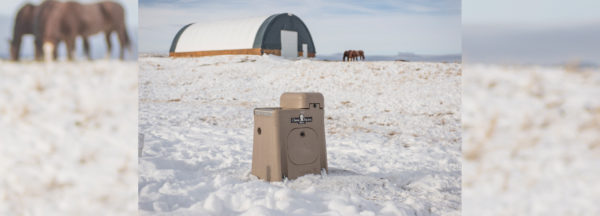Frozen No More: Five Steps to Prep Your Waterer for Winter

By Ritchie Industries
Healthy horses spend 70 percent of their day eating forage and drinking water. During the winter, horses have a natural tendency to drink less water in colder temperatures so you need to be diligent with providing fresh, clean water at the right temperature.
Whether you use a high-end automatic waterer like Ritchie, Classic Equine by Ritchie or use an immersion heater in a tank, here are five easy steps to prep your waterer for the winter:
Step One: Clean Valve Chamber and Drinking Areas – Pay special attention to the area where the immersion heater is housed and remove all build up/deposits.
Step Two: Check All Water Seals – If the tracks are full of debris or other materials, they won’t seal properly, and cold air may leak in and freeze your valve system.
Step Three: Inspect the All-Weather Sealant – Before winter, make sure to inspect inside the unit to make sure no critters have taken up residence or caused damage.
Step Four: Install and Inspect Optional Heating Units – Inspect all units for any damage. Chill the water with ice to activate the built-in thermostat. The heater should be warm to the touch within 15 seconds if it is working properly.
Step Five: Troubleshoot Heating Elements – If your immersion heater is not becoming noticeably warm to the touch or if there is damage to the cord/wires, a new heater will be needed.
Self-regulating cable heaters are low wattage and do not feel noticeably warm to the touch. You may need to test this with a voltage meter or ask assistance from an electrician.
For more information on winter preparation, visit ritchiefount.com.
